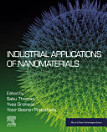Nanotechnology Applications for Tissue Engineering
About this ebook
About the author
Sabu Thomas is a Senior Professor of Mahatma Gandhi University, Kottayam, Kerala, India, and also Chairman of the TrEST Research Park, Trivandrum, India. He is known for his outstanding contributions in polymer science and nanotechnology.
Professor Yves Grohens is the Director of the LIMATB (Material Engineering) Laboratory of Université de Bretagne Sud, France. His master's and PhD degrees were from Besançon University, France. After finishing his studies, he worked as assistant professor and later professor in various reputed universities in France. He is an invited professor to many universities in different parts of the world as well. His areas of interest include physicochemical studies of polymer surfaces and interfaces, phase transitions in thin films confinement, nano and bio composites design and characterization, and biodegradation of polymers and biomaterials. He has written several book chapters, monographs, and scientific reviews and has published 130 international publications. He is the chairman and member of advisory committees of many international conferences.
Dr.Neethu Ninan was awarded PhD in Materials Engineering from Universite de Bretagne Sud, Lorient, France. She received Masters in Engineering in ‘Nanotechnology in Medical Science’ from Amrita Centre for Nanosciences, Kochi, India. She did her Bachelors of Engineering in ‘Biotechnology and Biochemical Engineering’. She worked in collaboration with Universiti Technologi Mara (Malaysia), Mahatma Gandhi University (India) and Chonnam National University (South Korea). She is the editor of four books. She has written several articles, book chapters, and reviews in international journals. Her keen research areas are nanotechnology, composites, tissue engineering, drug delivery and zeolites.







